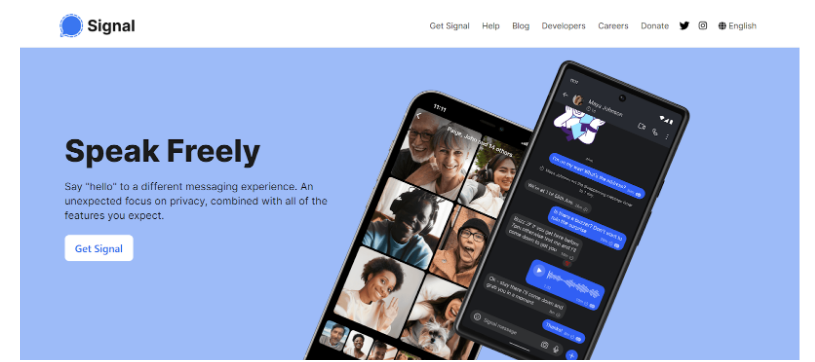NFTs, or non-fungible tokens, are unique digital assets that verify ownership of digital creations on the blockchain, creating a new market for buying and selling digital art, collectibles, and other virtual items. This potential has attracted many investors, driving a rapid increase in NFT investments, with over 12,000 sales occurring every day, according to Bankless Times.
However, as this is an emerging market that is not yet fully regulated, it has also attracted many scammers, leading to increased criminal activity. In this post, we will tell you about the most common NFT scams and how to protect yourself within the blockchain market.
Need support after a scam? Join our community today.
What Are NFT Scams?
NFT scams are fraudulent schemes in the digital token market where scammers sell fake or worthless tokens, often pretending to be well-known artists or public figures to attract buyers. These scams can also involve phishing tactics, trying to access victims’ funds or NFT wallets.
7 NFT Scams Every Investor Should Watch For
The world of NFTs has many holes that lead to scams. As reported by Elliptic, more than $8 million in illegal funds have been funneled through NFT platforms since 2017, accounting for 0.02% of trade activity linked to identifiable sources. The most common NFT scams include:
1. Pump-and-Dump Schemes
In these schemes, scammers raise the price of an NFT by creating false hype through social media and celebrity support. Once the price is high enough, they sell (dump) the NFTs and disappear.
- Example: In the Evolved Apes NFT collection, the developers promoted the NFTs as a planned fighting game project, creating massive hype around the potential for future value and community participation. After raising around $2.7 million, the project leader, known as Evil Ape, disappeared along with the funds and the website.
2. Airdrop Scams
Airdrop scams take advantage of users by offering free NFTs or tokens, attracting them to connect their cryptocurrency wallets to a supposedly secure offer. Once the wallet is connected, malicious software included in the airdrop activates, allowing scammers to access and drain the funds or assets stored in the wallet, resulting in financial losses.
- Example: The scam involved airdrops similar to legitimate offers from entities like Yuga Labs. Victims received links to fraudulent websites where, upon connecting their wallets to claim the promised NFTs, they unknowingly granted scammers access to drain the wallets.
3. Bidding Scams
In NFT marketplaces, during the resale of an NFT, scammers often place an attractive high bid using a reputable cryptocurrency. Just before finalizing the transaction, they switch to a lower-priced cryptocurrency, tricking sellers into accepting a deal far below the NFT’s true worth.
- Example: An NFT owner might believe they are accepting a bid of 20 Ether, worth around $9,000, but the scammer switches the payment to 50 Dogecoin, worth less than $5, just before the transaction completes.
4. Phishing Scams
In phishing scams, fraudsters send fake emails that appear to come from well-known NFT platforms. These emails typically have links leading to fake websites that capture your login information.
- Example: The OpenSea phishing attack in February 2022 involved emails that appeared to be OpenSea’s official communication, urging users to update their contact details on a fraudulent website. This led to data theft, resulting in the loss of approximately $1.7 million in NFTs.
5. Rug-Pull Scams
Rug-pull scams occur when NFT project creators build hype around a new NFT collection, often using celebrity support and strong marketing, only to disappear with investors’ money once sufficient funds have been raised.
- Example: A popular case was the Frosties NFT scam, where the creators promoted the project with future game development promises and other rewards, collected over $1.3 million, and then abruptly closed their website and social media profiles.
6. Customer Support Impersonation
In this scam, fraudsters impersonate customer support agents from a legitimate NFT platform, like OpenSea, Rarible, or SuperRare. They contact users claiming there’s an issue with their account and often ask for sensitive information, such as your password or credentials.
- Example: An example would be receiving an email from someone to be from a legitimate support team, asking you to verify your account by clicking a link that leads to a phishing site.
7. Plagiarized NFTs
Plagiarized NFTs occur when scammers sell fake copies of artwork as original NFTs, confusing buyers and violating artists’ rights, which calls for better copyright checks and stronger verification on NFT platforms to protect creators and buyers.
- Example: OpenSea reported that 80% of NFTs created on their platform were fakes, including replicas of popular artworks passed off as originals by scammers looking to capitalize on the buyer’s inexperience.
Have questions about dealing with scams? Contact us for support.
How to Avoid NFT Scams
As we all know, one of the best ways to prevent fraud and scams is to think like scammers and understand each of their tactics. This rule applies to all areas, including NFT scams. Here are some steps you can follow to ensure your NFTs are secure:
1. Upgrade Your Account Security
- Use Two-Factor Authentication: Choose more secure methods like physical token generators, device-based authenticator apps, or push authentication. These methods are considerably safer than SMS or email verification.
- Protect Your Credentials: Never share your username or password. Legitimate entities will not request sensitive information via informal communications. Regularly update your passwords, and avoid using the same one across multiple accounts for better security.
2. Verify Website Authenticity
- Direct URL Entry: Avoid clicking on links from emails or social media, especially if they come from unknown sources. Instead, type the website’s URL directly into your browser to ensure you are visiting the legitimate site where you intend to buy NFTs.
3. Do Thorough Research
- Analyze the NFT Origin: Check the NFT with a reverse image search to see if it appears on multiple marketplaces, which could indicate a scam, and verify that it comes from a trusted source, such as the artist’s website or verified social media. If you suspect fraud, report it to the exchanges immediately.
- Research the Seller: Always check the seller’s history and identity. Ensure they have a track record of legitimate transactions and positive feedback from other buyers. You can search for reviews on platforms like Reddit or Trustpilot.
4. Use Protective Technology
- Use a VPN: Consider using a VPN, like NordVPN, to encrypt and anonymize your internet traffic, making it harder for scammers to intercept or trace your online activities. This is especially useful when dealing with sensitive transactions.
- Choose for Cold Storage: To maximize security, store your digital assets in a cold storage wallet. This type of wallet keeps your assets offline and safe from online vulnerabilities. Reliable hardware wallets include the Ledger Nano X and Ledger Nano S.
Protect Your Digital Assets from NFT Scams with CDN
Now that you are aware of the most common NFT scams, it’s time to start protecting your assets. To do this, you can join our community at Cryptoscam Defense Network, where we keep you updated on the latest tactics used by scammers so you can protect yourself, even as authorities monitor and track these scammers.
In particular, the NFT market is projected to experience an annual growth rate of -11.01% from 2024 to 2025, according to Statista. This highlights the need for collectors and digital artists to be particularly cautious and well-informed when interacting with NFTs.
We Want to Hear From You!
Fraud recovery is hard, but you don’t have to do it alone. Our community is here to help you share, learn, and protect yourself from future frauds.
Why Join Us?
- Community support: Share your experiences with people who understand.
- Useful resources: Learn from our tools and guides to prevent fraud.
- Safe space: A welcoming place to share your story and receive support.
Find the help you need. Join our Facebook group or contact us directly.
Be a part of the change. Your story matters.
Frequently Asked Questions (FAQs) About NFT Scams
What Should I Do if I Meet a Suspicious NFT Offer?
If you come across a suspicious NFT offer, avoid engaging with it. Instead, do some careful research on the NFT and the seller, such as doing a reverse image search and checking the seller’s history on platforms such as Reddit or Trustpilot to spot any signs of NFT fraud.
How Can I Protect my NFT Transactions from a NFT Scam?
Use secure methods of authentication, such as physical token generators or device-based apps for two-factor authentication. Additionally, consider using a VPN to encrypt your internet traffic and store your assets in a cold storage wallet to improve your NFT security.
Where can I Find a Community to Discuss and Learn about Preventing NFT Scams?
Join the Cryptoscam Defense Network, a community dedicated to educating members about common NFT scamming tactics and providing updates on protecting yourself, even as authorities monitor fraudsters.
Photo via Pexels.

![feature Bitcoin and Ethereum coins in the foreground with a blurred stock market chart in the background]](https://cryptoscamdefensenetwork.com/wp-content/uploads/2024/11/sanja-feature.png)





